PS4 Controller Charger Port Replacement Guide
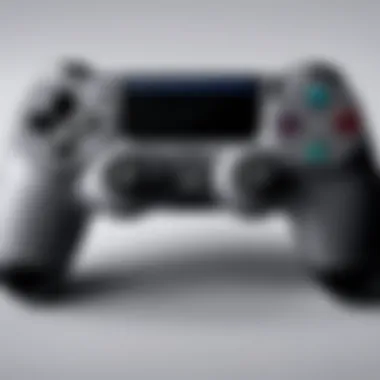
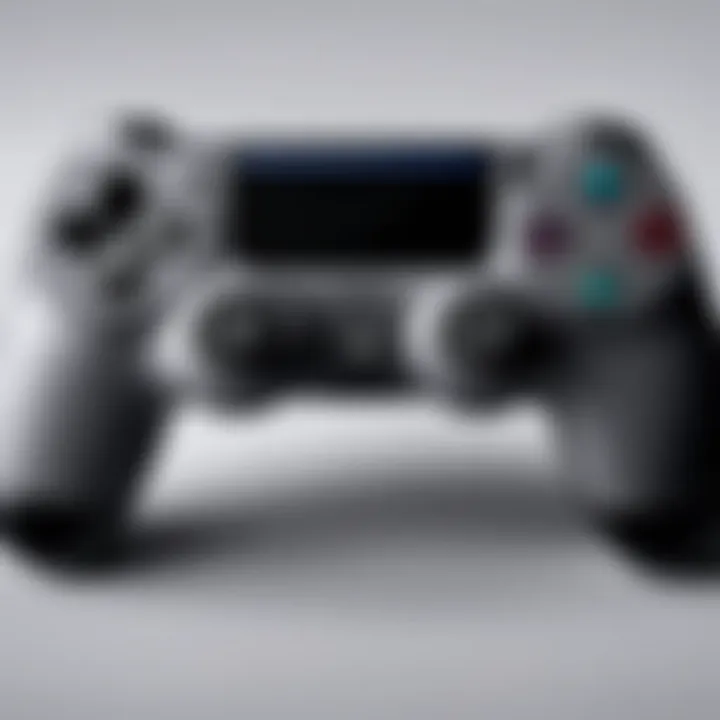
Intro
The PlayStation 4 controller has become an essential piece for gaming enthusiasts. It allows seamless interaction within diverse gaming environments. However, like any electronic device, wear and tear can lead to damages, particularly to the charger port. Replacing this part can enhance controller lifespan. This guide aims to unravel the complexities surrounding the process of charger port replacement, making it accessible for all.
Overview of the Product
Purpose and Benefits
Replacing the charging port of a PS4 controller is crucial to ensure that the device continues to function properly. A functional charger port means reliable charging and uninterrupted gaming sessions. The benefits include renewed device longevity and better response times, which are vital for stricter competitive gameplay.
Target Audience
This guide targets tech enthusiasts, avid gamers, and computer builders. Those who delight in DIY repairs will find this information particularly useful. Understanding the intricacies of hardware troubleshooting can empower users to take control of their gaming experience.
Key Features
- Enhanced Charge Efficiency: A new charger port can restore and improve charging times.
- Sustainability: It prolongs the life of the PS4 controller, reducing electronic waste.
- Cost-Effective: Replacement is often cheaper than purchasing a new controller.
Tools Required for Replacement
Before beginning the replacement process, it is essential to gather the right tools. This ensures efficiency and minimizes errors.
- Precision screwdriver set
- Tweezer
- Plastic opening tool
- Soldering iron (if necessary)
- Replacement charging port component
Step-by-Step Process
Replacing the charging port involves a careful set of actions:
- Preparation: Ensure the controller is turned off. Remove the screws from the back of the controller using a precision screwdriver.
- Open the Case: Use a plastic opening tool to gently pry apart the controller case, being careful not to damage any clip.
- Locate the Charging Port: Identify the damaged charging port on the motherboard.
- Desolder the Old Port: Heat the soldering iron and carefully desolder the old charging port, ensuring no other components are affected.
- Install the New Port: Position the new port in place and solder it onto the board carefully.
- Reassemble the Controller: Once secured, reassemble the controller by snapping the case back together and replacing screws.
- Test it: Connect the controller to a charger to ensure it functions properly once more.
Answers to Common Questionss and Troubleshooting
Common Issues and Solutions
- Port Not Charging After Replacement: Ensure all solder connections are secure.
- Loose Case: Make sure clips are properly snapped before replacing screws.
Expert Tips
- Always use the correct tools to avoid causing further damage.
- Keep all small parts organized during disassembly to prevent loss.
Prologue to PS4 Controller Issues
The functionality of a PS4 controller is crucial for an enjoyable gaming experience. One common issue that arises over time is a malfunctioning charging port. Addressing this issue is important not only for gameplay but also for the longevity of the controller. Understanding the implications of a failing charging port is essential for gamers who rely on the device for extended periods.
Common Symptoms of a Failing Charging Port
Identifying early signs of a charging port issue can prevent further complications. Some frequent symptoms include:
- Inconsistent Charging: The controller may charge only intermittently or not at all.
- Loose Connection: The connection to the charging cable may feel loose or unstable.
- Visible Damage: Physical damage around the port or on the cables can indicate problems.
- Battery Drain: Rapid battery drain, even when fully charged, may suggest a defective port.
Recognizing these symptoms quickly allows for timely intervention, saving the gamer both time and potential replacement costs.
The Importance of Proper Maintenance
Maintaining the PS4 controller is paramount for optimal performance. Regular care helps to prolong the lifespan of the charging port and the device as a whole. Here are some benefits of proper maintenance:
- Enhanced Performance: Clean ports ensure efficient power transfer, supporting better functionality.
- Prevention of Build-Up: Dust and debris can obstruct the charging port, hampering performance.
- Cost-Effective Solutions: Regular checks and maintenance can reduce the need for extensive repairs.
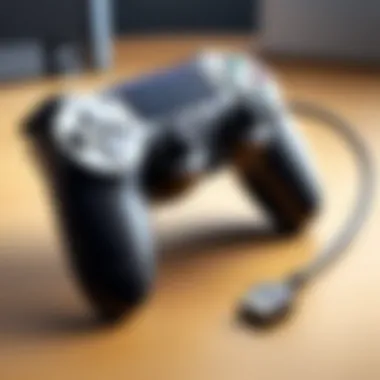
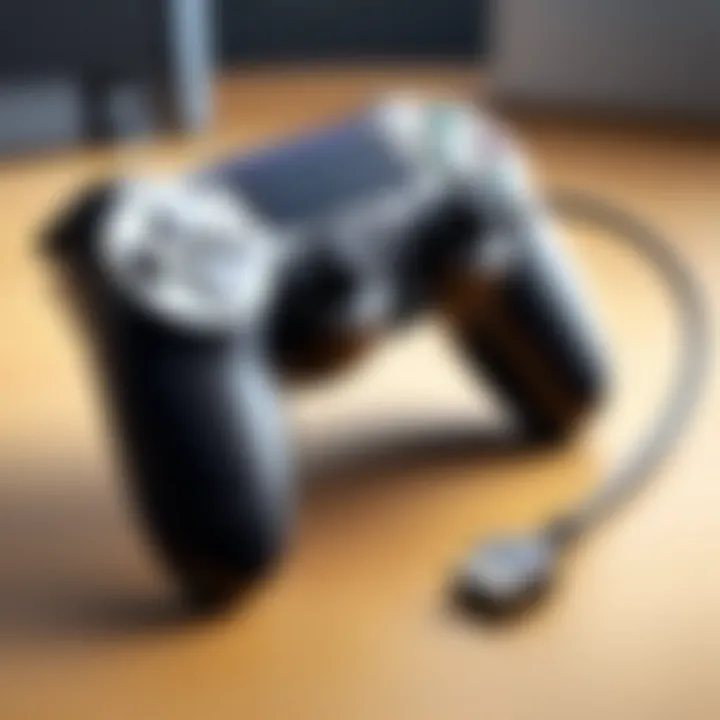
To ensure longevity, users should incorporate maintenance practices, such as gently cleaning the charging port with compressed air and avoiding excessive force when inserting cables. Effective maintenance practices are simple but have a significant impact on the longevity and effectiveness of the PS4 controller.
Tools Required for Replacement
The process of replacing the charging port on a PS4 controller is intricate and requires a specific set of tools. This section delves into the importance of having the right tools at your disposal when you attempt this repair. Utilizing proper tools not only streamlines the process but also drastically lowers the risk of damaging the controller and its components. It enhances your efficiency, minimizes frustration, and helps achieve a successful outcome.
Essential Tools Overview
To replace the charging port, you will need several essential tools. Here is a breakdown:
- Precision Screwdriver Set: A set that includes both Phillips and flathead screwdrivers is crucial. The screws in a PS4 controller are small and can be easily stripped if the wrong tool is used.
- Plastic Pry Tools: These help in disassembling the controller without damaging the housing. Unlike metal tools, plastic ones reduce the risk of scratching the plastic surfaces.
- Tweezers: A pair of fine-tipped tweezers can assist in handling tiny components, especially when reconnecting wires or removing the old charging port.
- Soldering Iron: Required for desoldering the old port and soldering the new one in place. It is important to use a precise soldering tool to avoid damaging surrounding components.
- Multimeter: This tool allows you to test the functionality of the charging port before and after replacement.
- Anti-Static Wrist Strap: Protecting electronics from static electricity is essential. This strap ensures that no static charge discharges to sensitive components during handling.
Having the right tools not only aids in a smoother replacement but also safeguards the overall integrity of your controller.
Safety Equipment Recommendations
Safety should always be a priority during any electronics repair. Here are the recommended safety equipment to consider:
- Safety Goggles: Eye protection is vital, especially when using a soldering iron or when there is a risk of parts snapping or flying.
- Dust Mask: When soldering, fumes can be harmful. Wearing a mask will help prevent inhalation of any potentially toxic fumes.
- Heat Resistant Gloves: These gloves are important when handling parts that may have been heated during the soldering process.
"Safety is not just considered during the repair itself, but in the preparation as well. Ensure your workspace is properly organized and your tools are in reachable position, minimizing any risks."
In summary, preparing appropriately with the necessary tools and safety equipment is critical. This sets a foundation for successful repairs and minimizes the chance of accidents or improper handling of your PS4 controller.
Disassembling the PS4 Controller
Disassembling the PS4 controller is a critical step in replacing the charging port. This process allows users to access the internal components that are typically not visible. Understanding how to take apart the controller correctly is essential, as improper disassembly can lead to further damage. This section will serve as a detailed guide to ensure each step is clear and achievable.
Step-by-Step Disassembly Process
To start the disassembly of a PS4 controller, you will need a few tools: a small Phillips screwdriver, a Torx screwdriver (often T8), and a plastic prying tool for delicate parts. Follow these steps carefully:
- Remove the screws: Begin by flipping the controller over. Locate the small Phillips screws holding the back cover. Carefully remove these screws and keep them in a safe place.
- Separate the front and back: Use the plastic prying tool to gently separate the front and back halves of the controller. Start at one corner and gradually make your way around to avoid damaging the clips.
- Disconnect the battery: Once the halves are separated, locate the battery. Disconnect it from the board but do not remove it just yet. This will ensure there is no electrical interference during further steps.
- Access the internal circuitry: With the battery and back cover removed, you can now access the internal circuit board. This is crucial for reaching the charging port.
This step-by-step approach highlights the importance of methodical action. Each stage requires attention to avoid any mistakes.
Identifying Internal Components
Within the PS4 controller, several components are crucial for functionality. Understanding each part helps in the charging port replacement process. Here are the key components to note:
- Motherboard: This is the main circuit board that houses the key functionalities of the controller, including the charging port.
- Battery: The power source of the controller, the battery connects to the motherboard and influences charging and power supply.
- Buttons and Triggers: These may be temporarily disconnected, but they play a role in the functionality of the controller.
- Charging Port: This is the component that is being replaced, usually situated on the top half of the controller.
Familiarizing yourself with these internal parts will make the repair process easier. Each component plays a specific role, and knowing where they are located minimizes confusion during reassembly.
Accessing the Charging Port
Accessing the charging port of your PS4 controller is a crucial step in the replacement process. The charging port directly affects your controller's ability to receive power from a charging cable. A malfunctioning port can render the controller useless or lead to inconsistent charging. Thus, understanding how to access this component safely and efficiently is key.
Locating the Charging Port
To locate the charging port, you must first turn the controller upside down. The port is situated at the top rear section, easily identifiable by its small rectangular shape. It connects with a micro-USB cable, which is the standard charging method for many devices today. Ensure that you have adequate lighting and possibly a magnifying glass, as the details can be hard to see without proper tools.
There are additional indicators of location to consider: the charging port will typically have wear and tear around the edges if it has malfunctioned. This wear could be a sign that corrosion has set in or that the port has become loose due to extensive use. Be cautious as you inspect; any rough handling may lead to further damage.
Tips for Efficient Port Access
To ensure efficient access to the charging port, follow these guidelines:
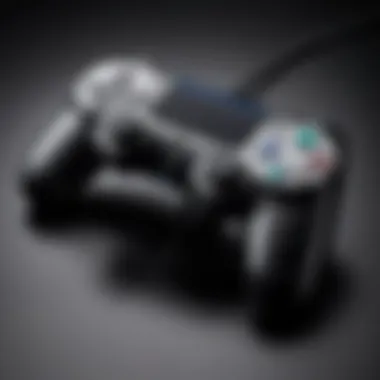
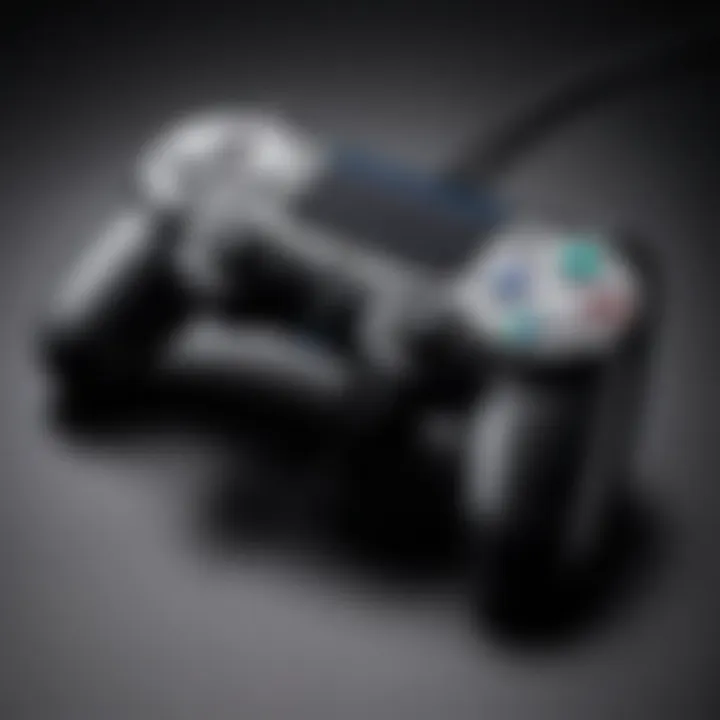
- Organize Your Workspace: Clearing any clutter will allow you to focus solely on the task without distractions.
- Use Appropriate Tools: Employ screwdrivers and tools that are specifically made for electronics. Using the wrong size can damage screws, making it difficult to access the interior components later.
- Familiarize Yourself with Disassembly: Reading up or watching tutorials on disassembling a PS4 controller can provide valuable insights. Knowing which screws to remove and in what order will save you time.
- Be Patient: Rushing through the disassembly process can lead to mistakes. Take your time to ensure that every step is performed correctly.
- Keep Track of Components: As you disassemble, keep track of screws and components. Use small containers to separate different parts to prevent loss or confusion during reassembly.
Accessing the charging port, while seemingly straightforward, requires careful handling and proper techniques. Following these steps will help reduce any potential issues and provide a smooth experience for the replacement process. By ensuring that you can easily access the port, you can approach the replacement with greater confidence and efficiency.
Removing the Old Charging Port
Removing the old charging port from a PS4 controller is a crucial step in the process of replacement. A malfunctioning charging port can lead to inconvenience and frustration for gamers, as it directly affects the usability of the controller. Understanding how to successfully remove the old port not only ensures effective replacement but also minimizes potential damage to the internal components. This section will explore the techniques involved in safe removal and address the challenges that may arise during this process.
Techniques for Safe Removal
To begin the removal of the old charging port, it is imperative to have a steady hand and the right tools. Use a precision screwdriver, as it will allow for adequate grip without damaging surrounding parts. Here are the key techniques:
- Power Off the Device: Before attempting to remove the port, ensure that the controller is completely powered off. This prevents unintended damage during the process.
- Discharge Static Electricity: Use an anti-static wrist strap to prevent static electricity from damaging the sensitive internal components.
- Secure Workspace: Work on a flat surface with ample lighting and avoid clutter. This will help keep track of small screws and components that may dislodge during removal.
- Gentle Manipulation: Apply consistent and gentle pressure when detaching the charging port. This reduces the risk of breaking delicate connectors or damaging the circuit board.
Taking each step with care is essential to achieving a smooth and safe removal.
Addressing Potential Challenges
While the removal process can seem straightforward, challenges may arise that require careful handling. Here are some common issues and their respective strategies for resolution:
- Stubborn Screws: If screws are stuck or stripped, consider using a rubber band for extra grip or a screw extractor set. Avoid using excessive force as it can cause further damage.
- Bonded Components: In some cases, components might be adhered together with adhesive. Use a heat gun to apply slight heat, which can weaken the adhesive and make it easier to separate parts without breaking them.
- Limited Space: The internal layout of the controller can be cramped. Be cautious of how you maneuver tools within the casing, as improper positioning can lead to damage.
"Attention to detail during removal can save time and prevent costly errors during controller repairs."
By being aware of these challenges and employing the right techniques, you can successfully remove the old charging port, paving the way for a new installation. This not only restores functionality but also enhances the overall lifespan of the PS4 controller.
Installing the New Charging Port
Installing a new charging port in a PS4 controller is a critical process that directly impacts the functionality and longevity of the device. A replacement port can restore the controller's ability to charge effectively, thus preventing further frustration for gamers. This section will emphasize the significance of using compatible components and outline the detailed installation procedures.
Choosing Compatible Replacement Parts
When selecting a replacement charging port, compatibility is key. Not all ports are designed equally, and using an incompatible part can lead to further issues down the line. It is best to reference the specific model of your controller. The DualShock 4 is the most common controller for the PS4, but be sure to double-check the model number as production variations can exist.
Consider using original equipment manufacturer (OEM) parts or high-quality third-party components that specify compatibility. Reviews and ratings can provide useful insights into the reliability of these parts. Some options include:
- OEM charging ports sourced from authorized retailers.
- Well-reviewed after-market parts known for stability and performance.
- Customizable kits for enhanced user experience.
By prioritizing quality and compatibility, gamers can ensure a seamless charging experience once the new port is installed.
Installation Process Details
The installation process for the new charging port involves specific steps that require precision. Here, we break down each phase of the installation.
- Align the New Port: Make sure the new charging port matches the position of the old one that was removed. Proper alignment is crucial for connectivity.
- Soldering Connections: Carefully solder the appropriate wires from the new port to the motherboard. Because soldering is delicate work, focus on maintaining a steady hand and ensuring good connections. If you're inexperienced with soldering, practice on a scrap board first.
- Secure the Port: Once the solder points are set, it’s important to reinforce the charging port to avoid movement during use. This may involve securing it with glue or adhesive meant for electronics, ensuring no further loosening occurs.
- Final Inspection: Before reassembly, inspect the work for any loose wires or poor connections. Proper visual checks can prevent problems in the future.
- Reassembly: After successful installation, reassemble the controller carefully, making sure all screws and components are restored to their original positions.
"Proper installation of the charging port can greatly extend the lifespan of your PS4 controller.”
Taking these installation details into account can vastly improve the performance of your device. This precision not only fosters ongoing usability but also enhances overall gaming experience.
Reassembling the PS4 Controller
Reassembling the PS4 controller is a critical stage in the repair process. It is important to ensure that every component fits back into place correctly to maintain the controller's functionality. This step not only protects the newly replaced charging port but also maximizes the performance of the controller overall. Any misalignment or misplaced part could result in further issues, making it crucial to follow a careful assembly procedure.
Steps to Proper Reassembly
- Organize Your Workspace: Before you start, gather all parts and tools. This includes screws, the new charging port, and any relevant tools you used during disassembly. Keeping everything organized helps to avoid losing small components.
- Align Internal Components: Carefully insert the internal components back into their designated slots. Pay attention to the connectors and ensure they are oriented correctly. Improper alignment can lead to functionality issues.
- Secure the Charging Port: Position the new charging port into its designated area. Make sure it sits evenly and does not tilt. Fix it in place with appropriate screws as per the original configuration.
- Reinstall the Housing: Take the top and bottom halves of the controller's shell and align them. Ensure that all clips and locks on the sides snap back into place smoothly without forcing any pieces together.
- Final Screw Insertion: Once the shell is in place, return the screws you previously removed. Be sure to use the correct screws in their original positions to avoid potential issues.
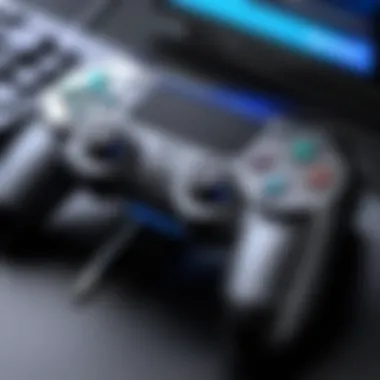
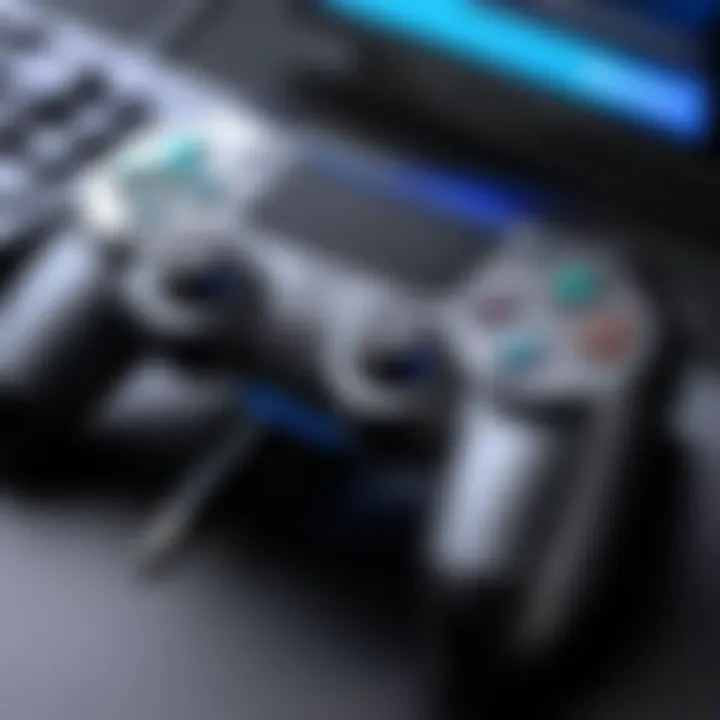
Testing the Controller After Assembly
Once the controller is fully reassembled, testing is essential. This process verifies that your replacement was successful and that the controller functions as intended. Here are the steps to effectively test your PS4 controller after assembly:
- Connect to Power: Use a USB cable to connect the controller to a PS4 console or a computer. This will allow you to check if the charging port functions correctly.
- Observe Charging Indicators: Look for any charging lights. The light bar should indicate charging status. A solid light usually means it’s charging, while a blinking light can indicate issues.
- Conduct Functional Tests: Check all buttons, triggers, and joystick movements. Make sure they respond as expected. The touch pad should also function correctly. A controller that does not register these inputs post-reassembly could suggest further issues.
- Use Diagnostic Software: If needed, consult software tools or applications that can help test controller inputs in deeper detail. This is especially useful for tech enthusiasts looking for precise functionality checks.
Remember: Taking your time during reassembly can save you from problems later on. A methodical approach will increase the chances that everything works correctly after your repairs.
Troubleshooting Common Issues
Maintaining the functionality of your PS4 controller is essential for an optimal gaming experience. When faced with charging port problems, understanding how to troubleshoot these issues can save you time and resources. This section highlights the importance of recognizing non-functioning indicators and outlines effective resolution techniques to address common charging port problems.
Identifying Non-Functioning Indicators
Recognizing the signs of a faulty charging port is crucial. Several indicators can point to issues that may need immediate attention. These include:
- Inability to Charge: If the controller does not charge when connected, this is often the most evident symptom of a failing port.
- Intermittent Charging: If the controller charges only sometimes or loses power without movement, this may indicate a loose connection.
- Physical Damage: Any visible damage to the port itself can suggest it is compromised. Look for cracks, bent pins, or debris that may obstruct the connection.
- Software Feedback: Sometimes, alerts on your gaming system may indicate a problem or incompatibility, prompting further investigation.
Understanding these indicators can help you quickly assess the controller's condition. If you notice any of these symptoms, it may be time to consider further steps.
Resolution Techniques
Once you have identified the signs of a non-functioning charging port, the next challenge is resolving the issues. Here are some effective techniques to consider:
- Inspect and Clean: Start by examining the charging port for any dirt or debris. Use a small, soft brush or compressed air to gently clean the area. This may solve connectivity problems without further intervention.
- Check the Cable: Sometimes, the issue lies with the charging cable rather than the port. Test the controller with a different USB cable to rule out this possibility.
- Reset the Controller: Performing a soft reset may help. Look for the reset button, usually located near the L2 shoulder button. Press it using a small tool to reboot the system.
- Seek Professional Help: If the issue persists, it might be best to consult a professional. Taking the controller to a certified repair shop can prevent further damage and ensure proper handling.
Troubleshooting effectively can often resolve issues without the need for complex repairs.
Taking these steps can help determine the best course of action for your PS4 controller, ensuring your gaming continues smoothly.
Preventative Measures for Future Maintenance
Preventing issues related to the PS4 controller’s charging port is essential for ensuring longevity and consistent performance. It is more efficient to implement preventative measures than to face the hassle of repairs. This part of the guide emphasizes systematic care practices that can keep your controller functioning effectively.
Regular Cleaning Techniques
Regular cleaning of your PS4 controller is vital for preventing dirt and debris accumulation that can obstruct the charging port. Here are a few suggested methods:
- Use Compressed Air: Gently blow out dust from the charging port using a can of compressed air. Be cautious not to insert any objects inside the port as it may cause damage.
- Microfiber Cloth: Wipe the exterior regularly with a soft, lint-free cloth. This removes oils and grime that can seep into the device.
- Isopropyl Alcohol: Apply a minimal amount of isopropyl alcohol on a cotton swab, and clean around the charging port gently. Make sure to let it dry thoroughly before using the controller again.
Keeping the charging port clean can significantly prolong its functional lifespan.
Optimal Charging Practices
Understanding how to charge your PS4 controller appropriately can further enhance its lifespan. Here are important practices:
- Use Official Chargers: Always use the official Sony charging cables. Third-party accessories might not provide appropriate voltage and can damage the port.
- Avoid Overcharging: Do not leave your controller plugged in excessively. Try to unplug it when it reaches a full charge to avoid battery strain.
- Charge Regularly: Establish a routine to charge the controller. Avoid letting the battery fully drain often, as this can wear out the battery over time.
By integrating these habits into your routine, you can minimize the risk of complications with your controller, ensuring it remains in optimal condition.
Finale
In the landscape of gaming, the functionality of a PS4 controller is paramount. This article has detailed the critical components and procedures involved in the replacement of the charging port. Understanding this process is essential for maintaining your controller's longevity and performance. The nuances of handling hardware, from disassembling the controller to ensuring proper reassembly, require attention to detail.
Summarizing Key Steps
- Assessment of Symptoms: Recognizing the signs of a failing charging port is the first step toward effective troubleshooting. Users should be aware of indicators such as sluggish charging, sporadic connection, or complete failure to charge.
- Gather Required Tools: An array of tools, including screwdrivers, heat guns, and precision tweezers, is necessary to execute the replacement. This preparation phase is vital to ensure successful completion of the task.
- Disassembly: Following a systematic approach to disassemble the controller will prevent accidental damage to internal components.
- Port Removal and Installation: Techniques for safe removal of the old port and secure installation of the new component are crucial. Attention must be paid to avoiding damage during this delicate process.
- Reassembly and Testing: Proper assembly of the controller will ensure that all components align. Once reassembled, it is critical to test the charging functionality.
Final Thoughts on Controller Care
Maintaining the condition of your PS4 controller extends beyond simply replacing faulty parts. Regular cleaning, paired with optimal charging practices, can significantly extend the life of your device.
- Regular Cleaning Techniques: Dust and debris accumulation can hinder performance. Lightly wiping the exterior components and ensuring that the charging ports are clear can prevent malfunctions.
- Optimal Charging Practices: Avoid overcharging and using unregulated charging devices. Following these practices will minimize wear on the charging port and ensure a longer life cycle for your controller.
Controller care is not just about quick fixes; it’s about fostering a culture of maintenance and prevention. Armed with the information from this guide, users can confidently engage in the upkeep of their gaming peripherals.



